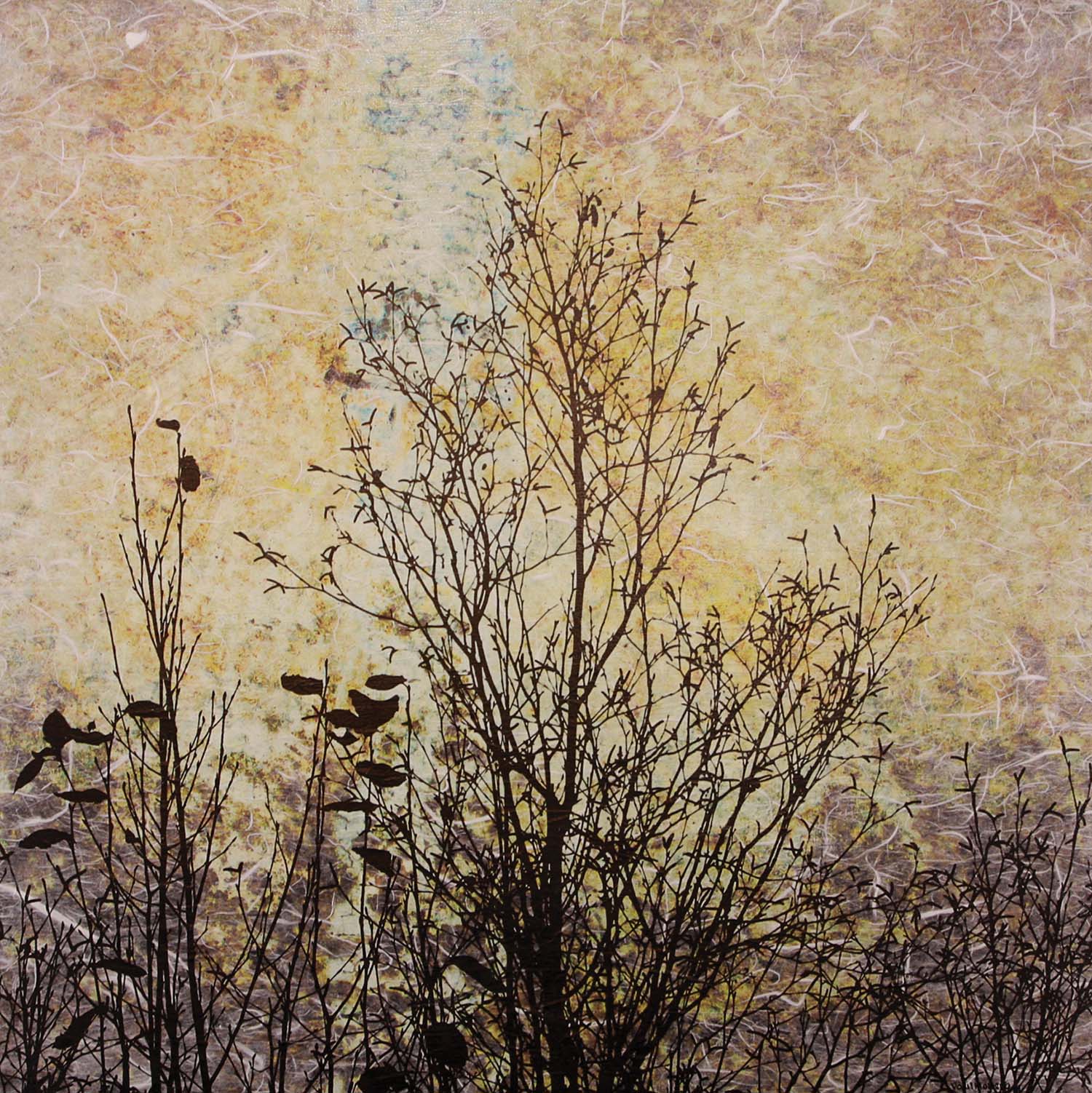
Nature reveals her secrets slowly, but for those with the patience to look closely, deeper meanings can emerge. So it is for Asheville photographer Paul Moberg, whose delicately layered images of silhouetted branches and leaves against a muted sky capture the mystery and serenity of the mountain forests to which he’s drawn.
The fascination with trees is a byproduct of his days on staff at the Morton Arboretum, near his hometown of Downers Grove, Illinois. “I spent countless hours visiting and later working at the Arboretum, and that’s where my love of trees was truly nourished,” Moberg says. He was a woodworker and an industrial draftsman before he and his wife moved to Asheville nearly 25 years ago and settled in Kenilworth, where Moberg began to combine his talents for drawing and painting with a newfound interest in photography. It was a technology that allowed him more creative expression — plus a way, as he once put it, “of seeing less and capturing more.” The result is a growing body of work that uses wood, painting, and digital imaging, unifying a lifetime of artistic experience.
The wooden elements are the birch ply panels Moberg makes himself, serving as the underlying canvas for the acrylic background of the images to follow. He applies several layers of paint, sands and scrapes to add texture, and creates depth with various glazes. Then the panels are ready for his pictures. “My process is to capture images of trees without any background information,” Moberg explains. “I shoot against a cloudless blue sky in the early morning or late afternoon, when the sun isn’t shining directly on the subject.”

Moberg may shoot dozens of such images before eliminating those blurred from wind movement, for example, or which may otherwise lack the sharpness and clarity necessary for his digital processing. Several images may be combined to add compositional interest. “Many of the prints I create don’t exist in nature,” he points out. “My editing is all about stripping away unwanted detail and combining complementary images with the intent to create a composition that has a lot of depth.”
Each image is printed on tissue-thin mulberry fiber paper — so thin that Moberg binds it to a plastic sheet before inserting it into his large-format printer. The print is peeled off the plastic once it cures. Multiple prints are then layered over the painted background using a clear acrylic gel. “Most of the paper fibers become translucent when soaked with the gel and allow the background color to show through,” Moberg says. “The uppermost print layer will show black.”
Moberg’s acrylic backgrounds forsake the normal bright punch of the medium for more muted blues, oranges, yellows, and grays. “I don’t use bright colors because they don’t represent the feeling of the moments I try to capture,” he says. “Also, the act of applying the mulberry paper over the paint tends to dull the colors, especially with multiple prints. I never know quite what the final background color will actually look like until the prints are applied.”
His labor-intensive technique is remarkable enough given that he’s self-taught. Even more dauntingly, Moberg suffers from ataxia, a genetic disorder that affects movement, balance, and fine motor skills. “The best way to describe it is like a drag chute,” he says. “It slows everything down because I have to stop often and let my balance, my eyes, my hands, my voice, everything recalibrate to normal. Then I can start up again. It takes a lot of time to do all of the things that keep me functioning, and that leaves less time for work and family and so on. But so far I’m holding steady and manage to keep active.”
Moberg’s pieces were featured during the summer at the Front Gallery of Asheville’s Woolworth Walk, where he’s been a contributing artist for some years. He works today from a distinctive home studio — a circular, translucent domed tent, 20 feet in diameter and 10 feet high, that sits in his backyard. “The light is incredible in the afternoon,” Moberg says. “Pure white from side to side. It’s a joy to be in there.”
Paul Moberg’s art can be found in downtown Asheville at Woolworth Walk (25 Haywood St.) and at K2 Studio (59 College St.). For more information about the artist, see paulmoberg.com.

Paul,
I am totally impressed by you creative art design…so uniquely created by our one and only.. fabulous article of you… Can’t wait to see more of your work..
Kathleen